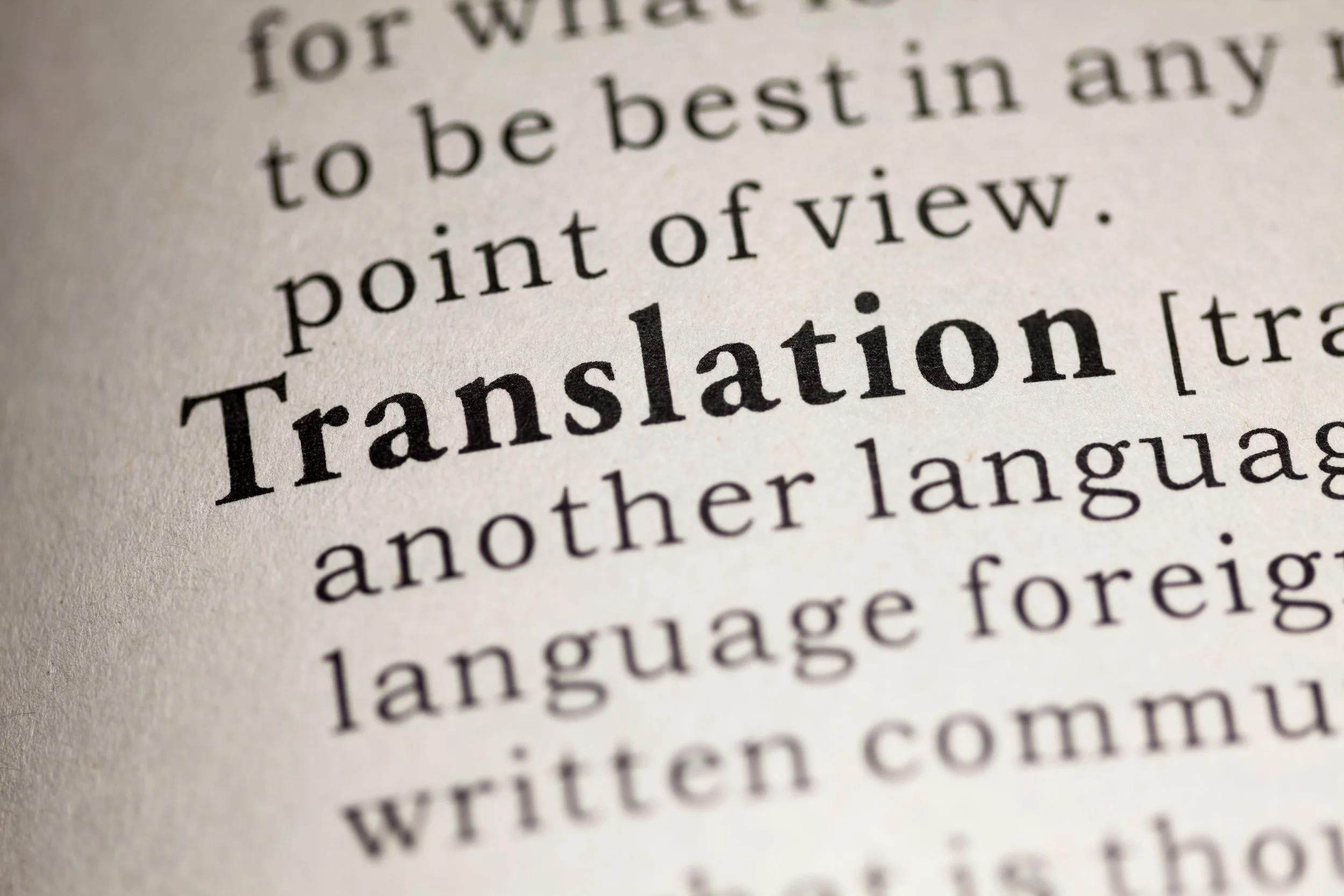
English to Finnish Translation & Content Services
Succeed in Finland with quality content.
How may I help you?
My services include English to Finnish translations, copywriting, SEO content optimization, and quality revision to ensure that your written Finnish communication is optimally localised.
Are you not happy with your current Finnish copy?
Do you want to improve your brand’s voice across all channels?
Does your content need proofreading or editing?
Do you want to attract more audience and organic visitors to your website?
-

English to Finnish Translation
I translate and localise your content tailored for your Finnish audience. A good translation doesn’t sound translated and is as impactful in Finland as your original content is in English speaking markets.
-

Copywriting
Words are powerful. That’s why it’s important to choose the right ones. I help you communicate more effectively and increase your conversion rate. Good copy is engaging and builds your brand with the right tone of voice.
-

Content Quality Revision
I edit, proofread and polish the language, structure and tone of voice of your content based on your content goals. As the result, your message is conveyed in a consistent and credible manner to your Finnish audience, and meets the highest quality standards.
-

SEO Content Optimization
I optimize your Finnish online content, so you can rank higher in search results and attract new organic visitors to your website. With your SEO on point, you’ll be able to capture more market share by outranking your competitors.
Workflow
This is how it works when you join me on a journey to epic content. Every translation and content project is different, but here’s a simplified example of the workflow so you know how your project is moving forward when working with me.
-
You can contact me via email or the website contact form. We’ll start with discussing about your project goals and content needs. Does your business need Finnish translation, copywriting, SEO content optimization or all of the above? At this point it’s also helpful to see your source documents to estimate the amount of work required with them.
When all the specifics of the project are clear, I’ll send you a detailed quote. If you want to know more about the cost of Finnish translation and estimate your budget in advance, check out my Pricing page for more information.
-
Once you have accepted the quote, I’ll start working with your project. The purpose is always to create the best possible content for your needs, so I start by doing proper research and familiarise myself with the topic. This is also a good time to send me your brand style guidelines, glossaries and terminology lists, so I can use the preferred terms and your tone of voice throughout the project.
-
After you have sent me all the project documents and the details are clear, the ball is in my court. If during the translation process anything needs to be clarified, I might ask you for more information, so nothing is left to chance. Naturally you’re also welcome to ask me anything if you have questions at this point.
-
When the translation is completed I always double check and proofread my own work, and then deliver it to you by the agreed deadline. I’m happy to receive any feedback and help you if there’s anything you would like to change before wrapping up the project. Once you have made the final review of the content, it’s time for invoicing – and most importantly – reaping the rewards of your high-quality Finnish content.
Translation, Localisation, Transcreation?
So, you need help with your Finnish translation, but in addition you find service providers offering you localisation and transcreation services. What are they all about? ‘Translation’ is a fairly simple concept, but what does Localisation or Transcreation mean, and what are the differences between these three?
Translation, localisation and transcreation are all related to the process of translating words and text from one language into another, each with a slightly different approach. Localisation and transcreation are more in-depth points of view in the translation process. In short, localisation refers to the cultural adaptation of the content for the target market, whereas transcreation goes even further by adapting local values, humour, nuances and idioms, focusing on the emotional response that the content evokes.
However, this fun fact goes more or less into the nice-to-know category, as it is mainly just lingo of translation professionals. You don’t have to worry about choosing between these three approaches when working with me: I personally use the terms interchangeably and find the suitable approach for each context and audience. When you order a translation from me you can rest assured that your Finnish content is optimally translated to the target market, using a combination of all these translation methods appropriately (unless specified otherwise). If you want to know more about a specific term, check out the detailed definitions below.
-
Translation is a pretty simple concept: the process of changing a text from one language into another language, from source to target. Usually translation is viewed as a comprehensive process that takes into account all of the factors so that the outcome in the target language sounds natural.
However, when we compare the three terms – Translation, Localisation and Transcreation – the former is viewed as the least holistic method. In this concept translation is considered to be the literal method, where everything is translated word-for-word including every detail, without taking into account any cultural factors.
The direct approach may be appropriate for some content types, such as technical instructions, user manuals and legal documents where the translation must be as close to the original as possible. But for many other types of content, this literal approach doesn’t work well, and the outcome may sound stiff and impersonal.
With the direct translation, the content doesn’t reach its full potential and there’s a chance that a lot can get lost in translation. Even though the translation might be linguistically correct, it doesn’t necessarily resonate with the audience. This is likely to happen with machine translations where the AI doesn’t understand the cultural requirements and cannot produce localised content without human understanding.
The importance of using a more sophisticated approach increases the more abstract the content is. This is also the case with marketing translations as the translated content has to meet the cultural requirements of the target market.
In this setting of all three terms, ‘translation’ is seen like a basic layer that must be adapted towards more culturally appropriate content. That is where localisation and transcreation approaches come into the picture, as their focus is to effectively resonate with the target audience.
-
Localisation is all about adapting the translation to the cultural norms of the target audience, so that it looks and feels like your content is created specifically for them. A successfully localised content doesn’t sound translated and appears as it has been created within the local culture. This increases the credibility and customer experience.
‘Translation’ can be seen as just one part of the localisation process. Localisation is a more specialised approach appealing to the audience’s cultural preferences in their own language. It goes beyond the basic translation level to adapt the content based on the cultural, political, and societal code and value differences of the target market, such as humour, etiquette, rituals, symbols, beliefs, power structures and relationships.
A culturally appropriate translation is much more likely to resonate and connect with the target audience. That’s when working with a translator who knows the local culture and consumer habits comes in handy.
Localisation is paying attention to the cultural nuances in the tone and style of the content. Also details, such as date and time formats, telephone numbers, measurements and punctuation are adapted to the local standards. In addition to written content, the localisation process usually includes an overall adaptation across all content types, where visual elements, such as colors, shapes, images and graphics, are also adjusted to the local market.
Localisation means more than just translating content to the local language. Even if the different countries speak the same language – such as English or Spanish – there are cultural and linguistic differences between the regions that need to be taken into consideration in order to succeed in the target market.
-
Simply put, transcreation means creative translation. It goes even further with the cultural adaptation than localisation taking into account little nuances and phrasing. The original meaning of the source text is transformed to the local language in a way that it truly resonates with the target audience. Transcreated content appears as it was originally created within the culture, and it focuses on the desired emotions and response that the content evokes. This method is best suited for more abstract texts and marketing communication where you want the reader to engage with it personally.
In the transcreation approach the message of the source language is rewritten and transformed in a way that maximizes cultural relevance – such as local values, humour and idioms. Transcreation can be described as a level-up approach from localisation, as it’s diving even deeper into the culturally appropriate and meaningful adaptation. Sometimes you need to make substantial changes to the content to achieve the best possible outcome, so transcreation is also a close relative to copywriting.
The transcreator must understand the desired outcome and be confident to make significant changes when needed, so that the message can resonate on a local level. The focus is on evoking the same emotions and engagement among the local target audience as the original version does in its own market. Unlike a simple translation, transcreated content can achieve the biggest impact possible, as the text is brought to life in a way that the audience can truly identify with.

